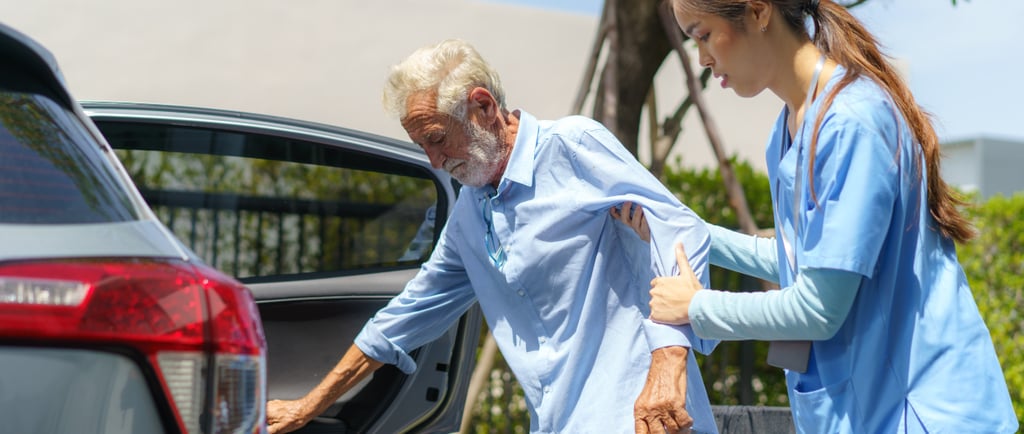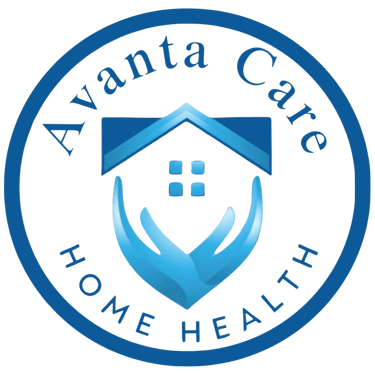Hidden Household Hazards: How Homecare Providers Can Prevent Senior Injuries Beyond Falls
When we talk about safety at home, we mostly think about fall risks. But many seniors face lesser-known dangers — unsafe medication storage, cleaning chemical exposure, outdated electrical cords, and improper food handling that can lead to infections.
9/26/20254 min read


Uncommon but Serious Household Hazards for Older Adults
While falls are frequently highlighted as a primary risk for seniors, several other hidden hazards in the home can significantly endanger their safety and well-being. One such concern is unsafe medication storage. Many older adults take multiple medications, and the risk of accidental ingestion or incorrect dosing increases when prescriptions are not stored properly. Keeping medications out of reach of children, clearly labeled, and in their original containers is essential for preventing mishaps.
Another overlooked hazard involves the exposure to cleaning chemicals. Many household cleaning products contain toxic ingredients that can cause respiratory issues or skin irritations, particularly in older adults who may have compromised immune systems. Caregivers should be mindful of the types of products used and consider opting for less harmful, more natural alternatives. It is also crucial to ensure that these products are stored securely and away from areas where older adults may be vulnerable to accidental exposure.
Additionally, outdated electrical cords present a significant risk that needs to be addressed. Frayed wires or overused extension cords can lead to electrical shocks or even fires, making it vital for caregivers to inspect and replace any damaged cords. Keeping cords neatly arranged and out of walking paths can also prevent tripping hazards.
Improper food handling practices pose another risk for seniors. With age, the immune system may weaken, making older adults more susceptible to foodborne illnesses. It's important for caregivers to educate seniors about proper food storage, preparation, and hygiene practices to reduce their risk of infections. Regularly checking expiration dates and ensuring that food is cooked thoroughly are essential preventive measures.
Raising awareness about these hidden household hazards can lead to safer living environments for older adults, ultimately enhancing their quality of life. Caregivers play a critical role in identifying these risks and implementing strategies to mitigate them.
Assessing and Mitigating Risks: The Role of Trained Homecare Professionals
Trained homecare professionals play a vital role in evaluating household environments to identify hidden hazards that can lead to senior injuries. Their specialized training equips them with the knowledge and skills necessary to conduct thorough assessments of a client’s living space. This process often includes utilizing comprehensive safety checklists, systematic observations, and interviews with clients and their families to gather pertinent information about potential risks.
During assessments, homecare providers focus on several areas to identify risks. Common tasks may involve evaluating environmental factors such as lighting conditions, accessibility of essential items, and potential tripping hazards, such as loose rugs or uneven flooring. Careful scrutiny of these details can help reveal issues that may not be immediately obvious but pose significant dangers to older adults. The professional's keen eye is crucial in detecting problems that can easily be overlooked.
In addition to employing checklists and conducting observations, effective risk assessment relies heavily on open communication. By engaging clients in discussions about their daily routines and any difficulties they encounter at home, caregivers can gain insights into specific challenges that may contribute to unsafe conditions. This collaborative dialogue allows professionals to tailor their recommendations based on the unique circumstances of each client.
To mitigate identified risks, homecare professionals suggest various actionable strategies. These may include rearranging furniture for better access, installing grab bars in key areas such as bathrooms, and ensuring that emergency contact information is easily accessible. Furthermore, they may educate clients and their families about the importance of organization and clutter reduction, which enhances overall safety. In summary, thorough and ongoing assessments performed by trained homecare professionals are essential in creating safer environments for seniors, significantly reducing the risk of injuries beyond falls.
Proactive Steps for Ensuring Home Safety
Homecare providers play a crucial role in preventing injuries and enhancing the overall well-being of senior clients. By implementing a series of proactive measures, it is possible to significantly decrease the likelihood of accidents or health complications in their living environments. One fundamental step in ensuring safety is to organize medication storage effectively. Ensuring that medications are clearly labeled and stored in a designated area can prevent mix-ups and promote adherence to prescribed regimens.
Another important aspect is the selection of safer cleaning products. Traditional cleaning agents often contain harsh chemicals that may pose risks to seniors, especially those with respiratory conditions or allergies. Homecare providers should consider recommending eco-friendly and non-toxic alternatives that provide effective cleaning without compromising the health of residents.
Moreover, updating electrical appliances throughout the home can contribute to a safer living environment. Older appliances may pose risks such as electrical fires or malfunctions. It is advisable to replace outdated devices and ensure that all cords are in good repair, avoiding potential tripping hazards. Regular inspections of the home’s electrical system also help in identifying issues before they become serious problems.
Promoting proper food handling practices is another essential step in home safety. Homecare providers should educate clients about safe food storage, cooking temperatures, and hygiene practices to minimize the risk of foodborne illnesses. By taking these measures, caregivers not only foster a healthier environment but also empower seniors to maintain autonomy within their homes.
Through these proactive strategies, homecare providers can effectively reduce the risks associated with senior living while promoting a safe and supportive environment. Regular assessments and open communication with clients will further enhance these efforts, ensuring that safety remains a priority at all times.
Ongoing Caregiver Education: A Key to Preventing Emergencies
In the realm of senior care, continuous education for caregivers is pivotal in mitigating household hazards and preventing emergencies. As the living environments of seniors can evolve with changing needs, caregivers must be equipped with the latest knowledge and skills to effectively manage these hazards. Ongoing training enhances their ability to recognize potential risks, such as improper storage of medications, inadequate lighting, or cluttered living spaces, which may lead to unfortunate incidents beyond just falls.
There are various resources available for caregivers seeking professional development. Workshops organized by healthcare organizations and community centers can provide hands-on training and share best practices in hazard recognition. Additionally, online courses offer flexibility for caregivers, allowing them to learn at their own pace and access materials that cover the latest safety standards and protocols. Community resources, such as local health departments or area agencies on aging, may host informational sessions that focus on adjusting care strategies according to the evolving needs of seniors.
Staying informed about new safety protocols and emerging household hazards is critical for caregivers. This can involve subscribing to reputable publications, attending conferences, or participating in webinars focused on senior care and safety. By actively engaging in education, caregivers can not only enhance their skills but also foster a proactive approach to risk management. Thus, the integration of ongoing education into the daily lives of caregivers can significantly contribute to their competence and confidence in preventing emergencies. This not only safeguards the seniors they serve but also promotes a safer living environment overall.


